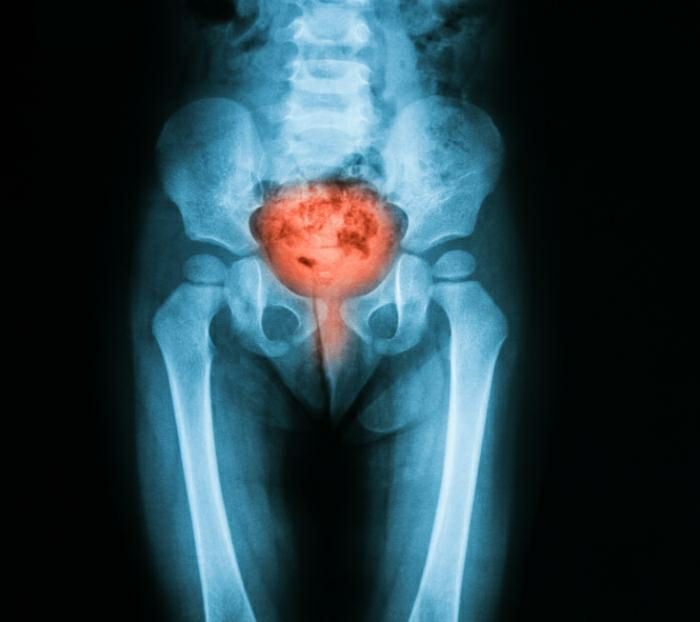Get the App
For Doctors
Login/Sign-up
Last Updated: Mar 27, 2021
BookMark
Report
What Is Interstitial Cystitis ( Painful Bladder Syndrome)?
Dr. Satyajeet P PattnaikUrologist • 17 Years Exp.MBBS, MS- General Surgery, MCH- Urology, Fellowship Minimal Access Surgery
Diagnosis -
The following may be helpful in diagnosing interstitial cystitis:
- Medical history and bladder diary - Your doctor will ask you to describe your symptoms and may ask you to keep a bladder diary, recording the volume of fluids you drink and the volume of urine you pass.
- Pelvic exam - During a pelvic exam, your doctor examines your external genitals, vagina and cervix and feels your abdomen to assess your internal pelvic organs. Your doctor may also examine your anus and rectum.
- Urine test - A sample of your urine is analyzed for signs of a urinary tract infection.
- Cystoscopy - Your doctor inserts a thin tube with a tiny camera (cystoscope) through the urethra, showing the lining of your bladder. Your doctor may also inject liquid into your bladder to measure your bladder capacity. Your doctor may perform this procedure, known as hydrodistention, after you've been numbed with an anesthetic medication to make you more comfortable.
- Biopsy - During cystoscopy under anesthesia, your doctor may remove a sample of tissue (biopsy) from the bladder and the urethra for examination under a microscope. This is to check for bladder cancer and other rare causes of bladder pain.
- Urine cytology - Your doctor collects a urine sample and examines the cells to help rule out cancer.
- Potassium sensitivity test - Your doctor places (instills) two solutions — water and potassium chloride — into your bladder, one at a time. You're asked to rate on a scale of 0 to 5 the pain and urgency you feel after each solution is instilled. If you feel noticeably more pain or urgency with the potassium solution than with the water, your doctor may diagnose interstitial cystitis. People with normal bladders can't tell the difference between the two solutions.
Treatment -
No simple treatment eliminates the signs and symptoms of interstitial cystitis, and no one treatment works for everyone. You may need to try various treatments or combinations of treatments before you find an approach that relieves your symptoms.
- Physical therapy - Working with a physical therapist may relieve pelvic pain associated with muscle tenderness, restrictive connective tissue or muscle abnormalities in your pelvic floor.
- Oral medications - Oral medications that may improve the signs and symptoms of interstitial cystitis include:
- Nonsteroidal anti-inflammatory drugs, such as ibuprofen (advil, motrin ib, others) or naproxen sodium (aleve), to relieve pain.
- Tricyclic antidepressants, such as amitriptyline or imipramine (tofranil), to help relax your bladder and block pain
- Antihistamines, such as loratadine (claritin, others), which may reduce urinary urgency and frequency and relieve other symptoms.
- Pentosan polysulfate sodium (elmiron), which is approved by the food and drug administration specifically for treating interstitial cystitis. How it works is unknown, but it may restore the inner surface of the bladder, which protects the bladder wall from substances in urine that could irritate it. It may take two to four months before you begin to feel pain relief and up to six months to experience a decrease in urinary frequency.
- Nerve stimulation - Sacral nerve stimulation.
- Nerve stimulation techniques include:
- Transcutaneous electrical nerve stimulation (tens. With tens, mild electrical pulses relieve pelvic pain and, in some cases, reduce urinary frequency. Tens may increase blood flow to the bladder. This may strengthen the muscles that help control the bladder or trigger the release of substances that block pain.
- Electrical wires placed on your lower back or just above your pubic area deliver electrical pulses — the length of time and frequency of therapy depends on what works best for you.
- Sacral nerve stimulation. Your sacral nerves are a primary link between the spinal cord and nerves in your bladder. Stimulating these nerves may reduce urinary urgency associated with interstitial cystitis.
- With sacral nerve stimulation, a thin wire placed near the sacral nerves sends electrical impulses to your bladder, similar to what a pacemaker does for your heart. If the procedure decreases your symptoms, you may have a permanent device surgically implanted. This procedure doesn't manage pain from interstitial cystitis, but may help to relieve some symptoms of urinary frequency and urgency.
In case you have a concern or query you can always consult a specialist & get answers to your questions!



+1.svg)
